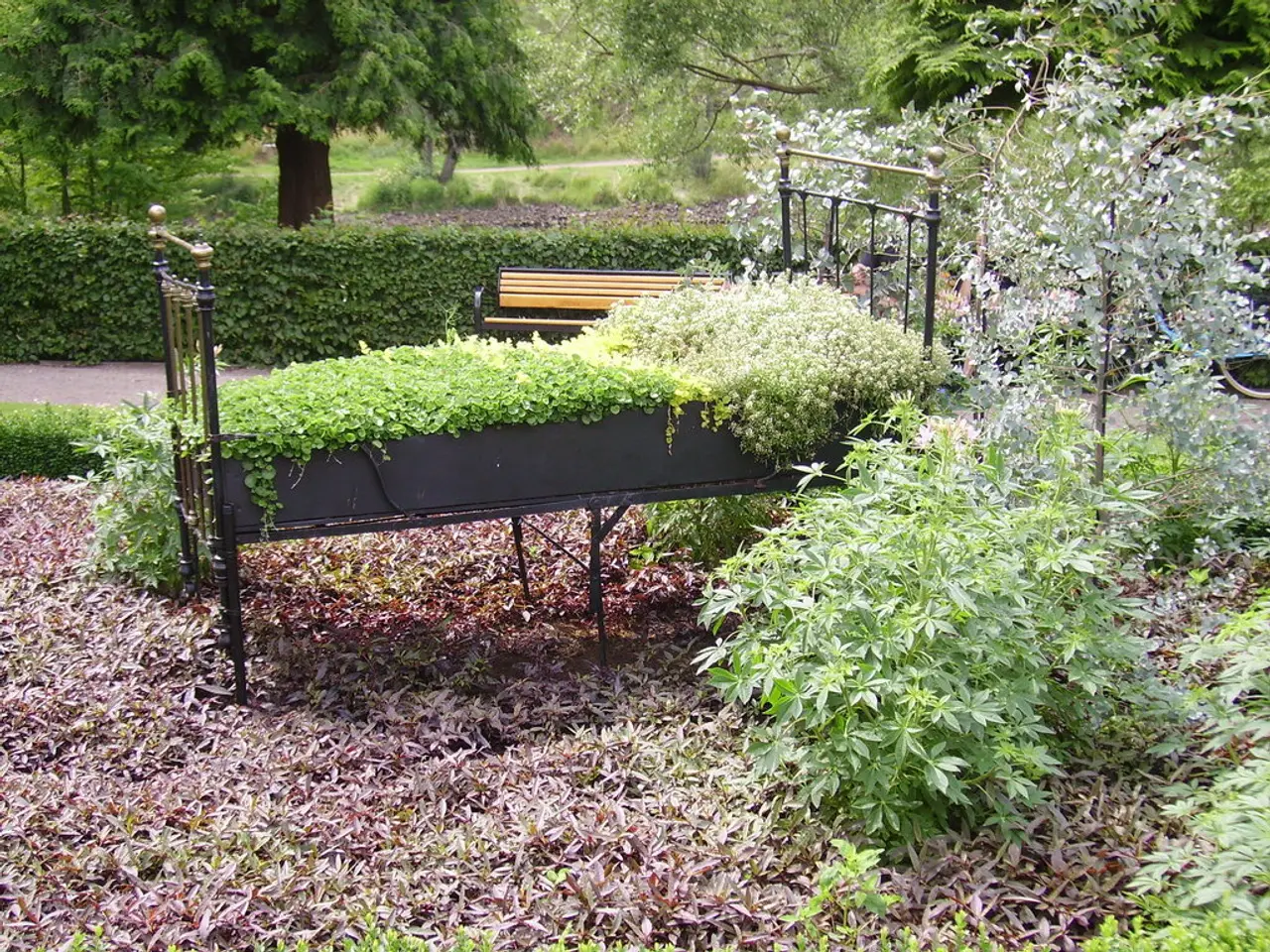"Five vegetation options for vertically enchanting structures"
Transforming House Walls into Green Canvases: The Advantages of Climbing Plants
From enhancing the aesthetic appeal of outdoor spaces to providing environmental benefits, greening house walls with climbing plants is a growing trend that offers numerous advantages.
Aesthetic Enhancement
Climbing plants soften harsh architectural features and beautify plain or unsightly walls, adding vertical interest and natural charm to outdoor spaces. They can disguise unattractive walls, fences, or other structural elements, improving overall garden appearance.
Space Efficiency
Utilizing vertical wall space allows gardeners to save ground area, which is especially beneficial for small gardens or urban areas. This innovative approach maximizes the use of limited space, creating a lush and inviting environment.
Privacy and Screening
Dense foliage can provide natural privacy by screening walls and reducing visibility into or out of a property. This feature is particularly useful for those seeking a more secluded outdoor space.
Environmental Benefits
Climbing plants can help cool buildings by shading walls, improve air quality, support local biodiversity by providing habitats for birds and insects, and improve air circulation around the house. They also cool the immediate surroundings and increase air humidity.
Low Maintenance
Many climbing perennials require little attention once established, making them reliable and hardy additions that return year after year. This low maintenance aspect is ideal for those with busy schedules or limited gardening experience.
Five Climbing Plants Well-Suited for Greening House Walls
| Climbing Plant | Key Features | Best Conditions | |----------------------|-----------------------------------------------------|--------------------------------------------------| | Climbing Hydrangea (Hydrangea anomala subsp. petiolaris) | Elegant creamy white blooms; self-clinging; thrives in shade; creates natural privacy up to 6 m tall; low maintenance once established[4][2] | Shady or north-facing walls, sheltered courtyards | | Wisteria | Dramatic cascades of purple or white flowers; long-lasting bloom; requires strong support structure[2] | Pergolas, mature trees, robust trellises, sunny spots | | Climbing Roses | Fragrant, colorful blooms over months; classic garden appeal; requires regular pruning, preferably disease-resistant varieties[2][4] | Arches, pergolas, sunny walls | | Honeysuckle | Attractive sweet-smelling flowers; attracts pollinators; tolerates some shade[4] | Shaded or partially shaded walls | | Trumpet Vine | Stunning orange-red trumpet blooms; thrives in hot, dry, sunny spots; attracts hummingbirds[2] | Hot, sunny walls, wildlife-friendly gardens |
Additional recommended climbers include star jasmine and clematis varieties for shade or partial sun, depending on specific garden conditions[4]. These plants provide varied color, texture, and ecological benefits, when chosen according to wall orientation, sun exposure, and structural support. For instance, self-clinging types like climbing hydrangea require less support but can be heavy, while vigorous bloomers such as wisteria need sturdy frameworks[2][4]. Selecting the right climber ensures long-term success and maximizes the advantages of greening house walls.
In conclusion, greening house walls with climbing plants offers a myriad of benefits, from aesthetic enhancement to environmental benefits. With careful plant selection and appropriate support structures, homeowners can transform their outdoor spaces into thriving, eco-friendly oases.
A home-and-garden enthusiast, seeking to add natural beauty and charm to their retreat, might consider using climbing plants on their house walls. This living artwork made from climbing plants softens architectural features, beautifies walls, and provides vertical interest that livens up outdoor spaces.
Gardening aficionados with limited space will appreciate that growing climbing plants vertically allows them to save ground area, making it possible to create a lush, inviting environment in small gardens or urban areas, thus maximizing space efficiency.




